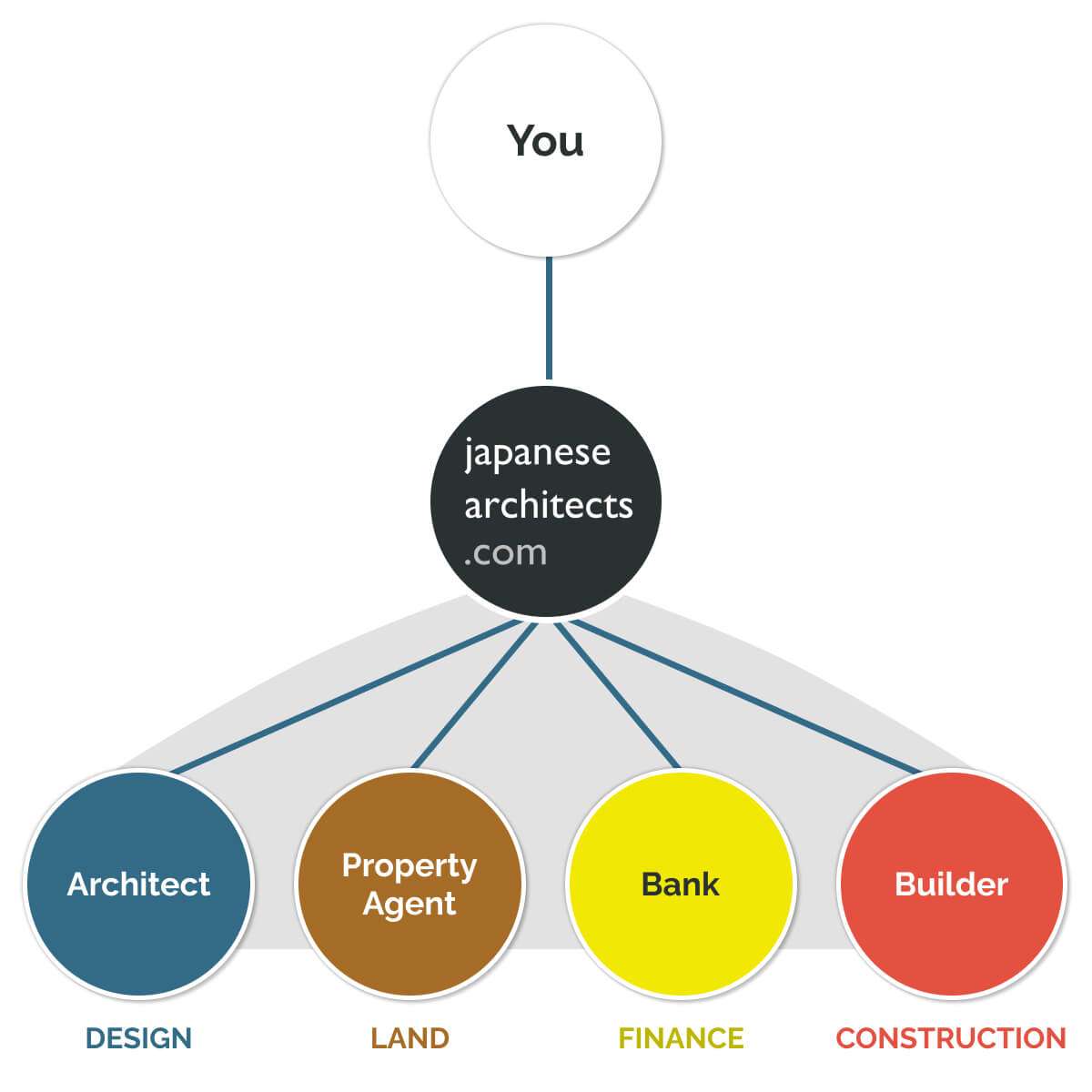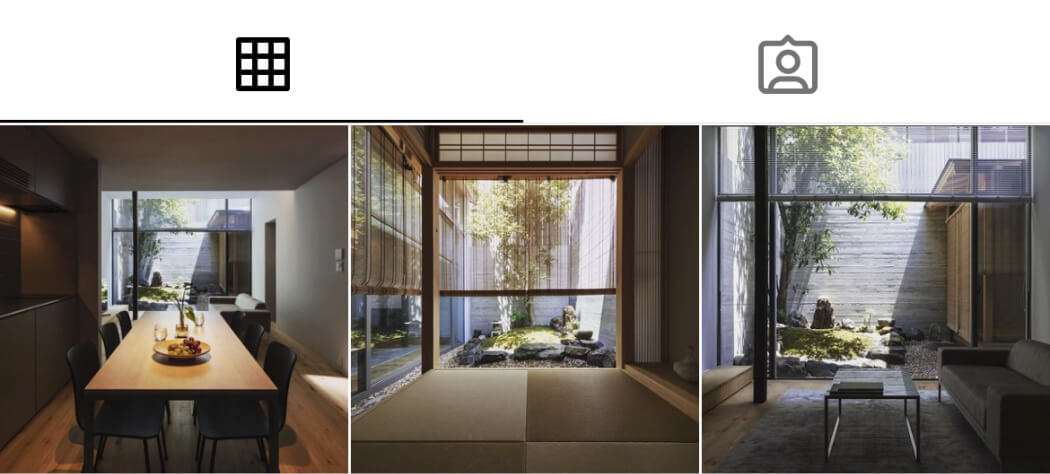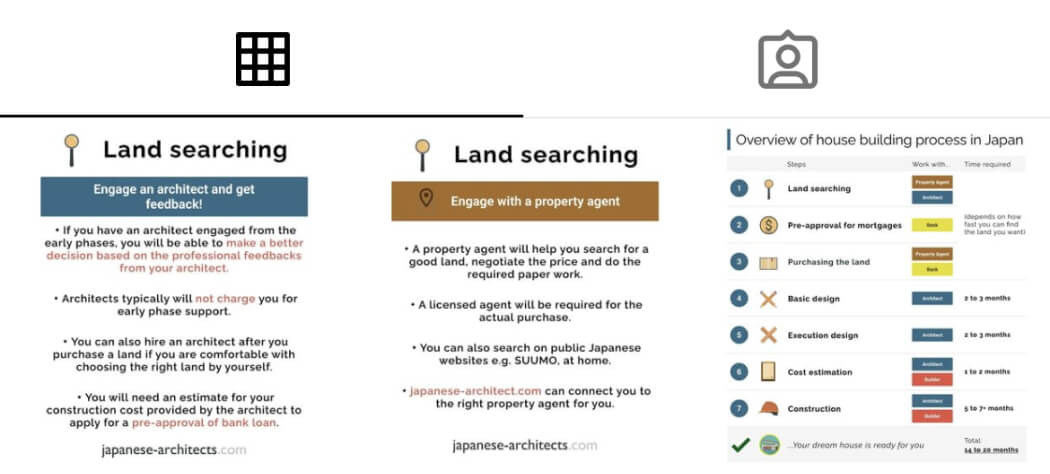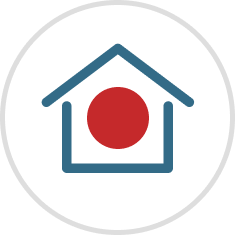Examples of beautiful sloped ceilings! How to select lighting and ceiling fan
A sloped ceiling, which takes advantage of the shape of the roof, has been popular for its spaciousness. You may be wondering whether you should have a sloped ceiling in your house and what kind of lighting you should select. In this issue, we will explain the advantages and disadvantages of a sloped ceiling and introduce some beautiful architectural examples. We will also explain the placement of lightings and ceiling fans.
1. what is a sloped ceiling? Advantages and disadvantages to know in advance
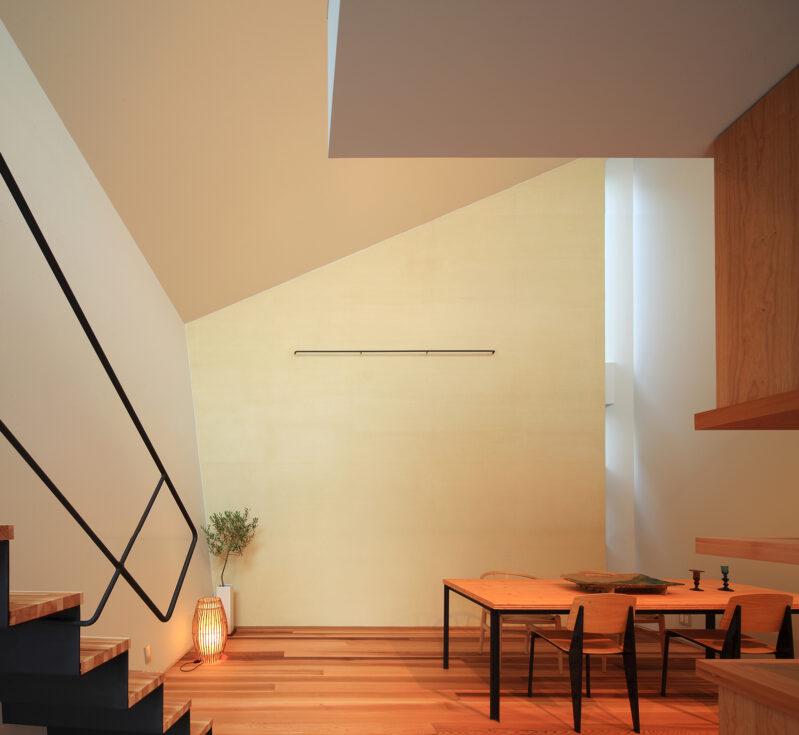


To decide whether to adopt a sloped ceiling in your own house, let's first take a closer look at what a sloped ceiling is and its advantages and disadvantages.
1-1. What is sloped ceiling?
A sloped ceiling (koubai teijo) literally means a ceiling with a slope. The ceiling is slanted to match the shape of the roof. A single-sloped roof slopes in one direction, while a triangular roof slopes in two directions.
A sloped ceiling is installed in a room of the second floor, the roofed part of the first floor without a second floor, and rooms in flat roof. More and more people are actively adopting this because it allows them to utilize the shed roof area, which usually becomes a dead space.
In addition, high windows in a sloped ceiling allows more light and air to flow in, and thus is often adopted in densely populated residential areas.
1-2. Advantages of sloped ceiling
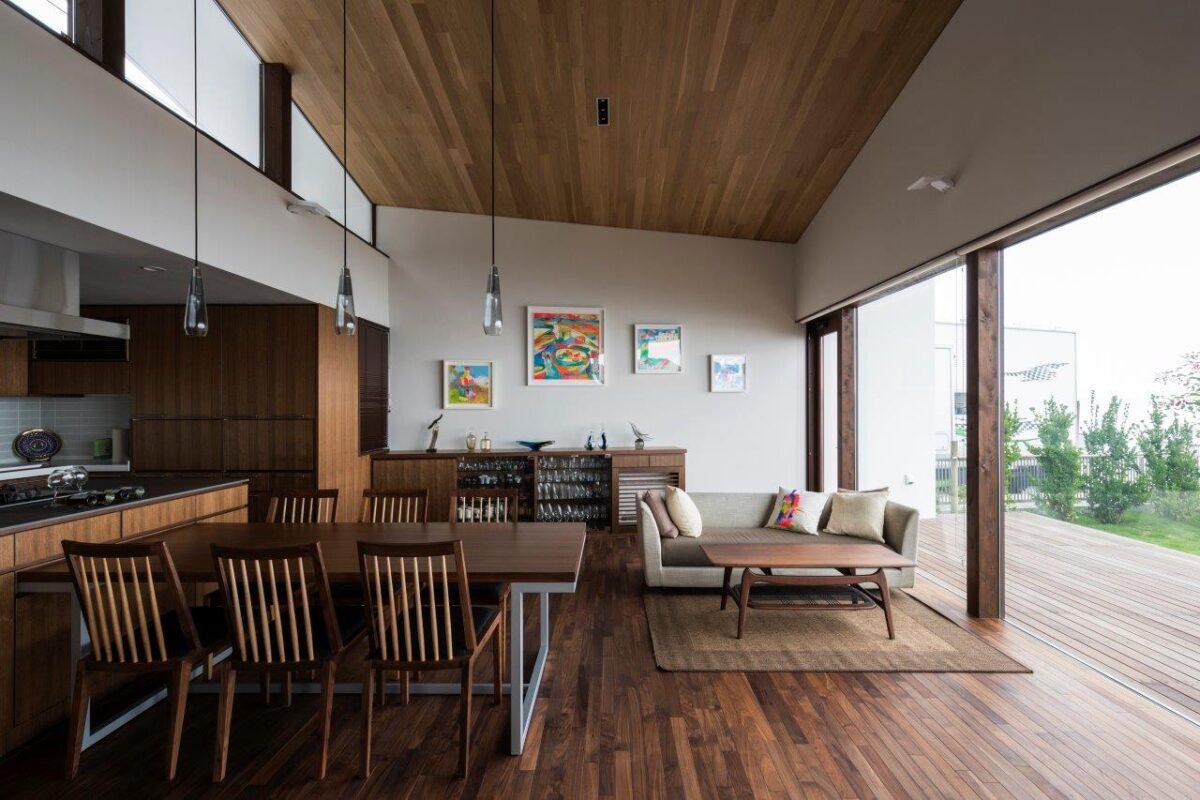


A sloped ceiling, not a usual flat ceiling, offers a variety of advantages. Let us introduce it in detail.
Sense of openness
First, the most attractive point about a sloped ceiling is its sense of openness. You can feel the space larger not only because of its depth and width, but also because of its height.
Another attractive point of a sloped ceiling is the sense of expansiveness as your line of sight vertically moves from low to high.
High windows allow light to enter the room and the view to be seen. Living with a view of the sky from the window will bring a sense of openness and relaxation.
Give accent in space
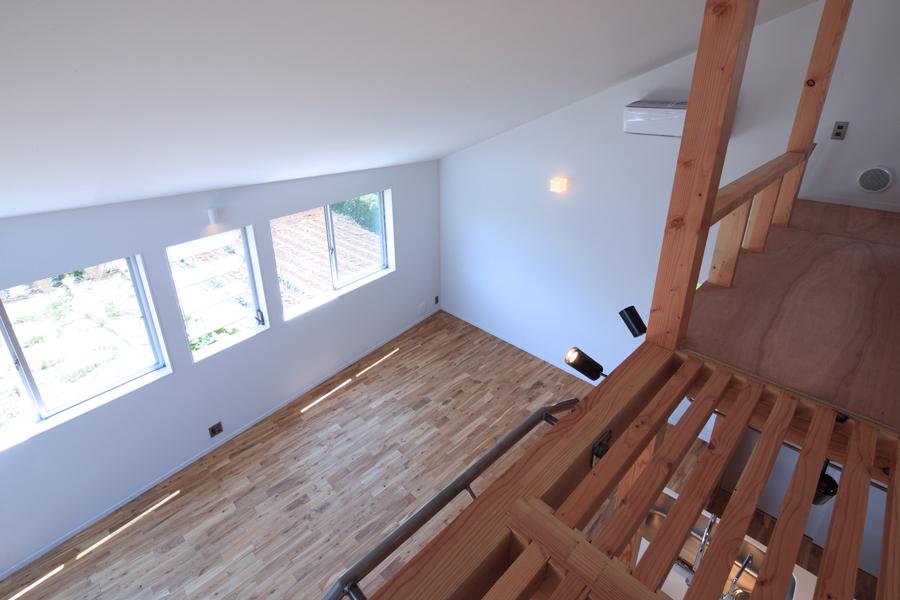


A sloped ceiling creates high and low parts in a single room, creating a more lively space.
As shown in the photo, a loft can be created using the upper space of the living room. The low ceiling creates a sense of calmness, while the high ceiling creates a sense of spaciousness, creating a rhythm in the space.
A sloped ceiling can create a dynamic space design that only a custom-built house can offer.
Better ventilation
Another advantage of a sloped ceiling is better ventilation. It can take advantage of the property of warm air going up and cold air going down.
For example, let's see a sloped-ceiling living room with a high window and a hip window in different directions.
This creates a "breezeway" that allows hot air to escape and fresh air to enter the room in the summer. This will allow a comfortable breeze to flow through the room and keep the space pleasant.
Beams as accent
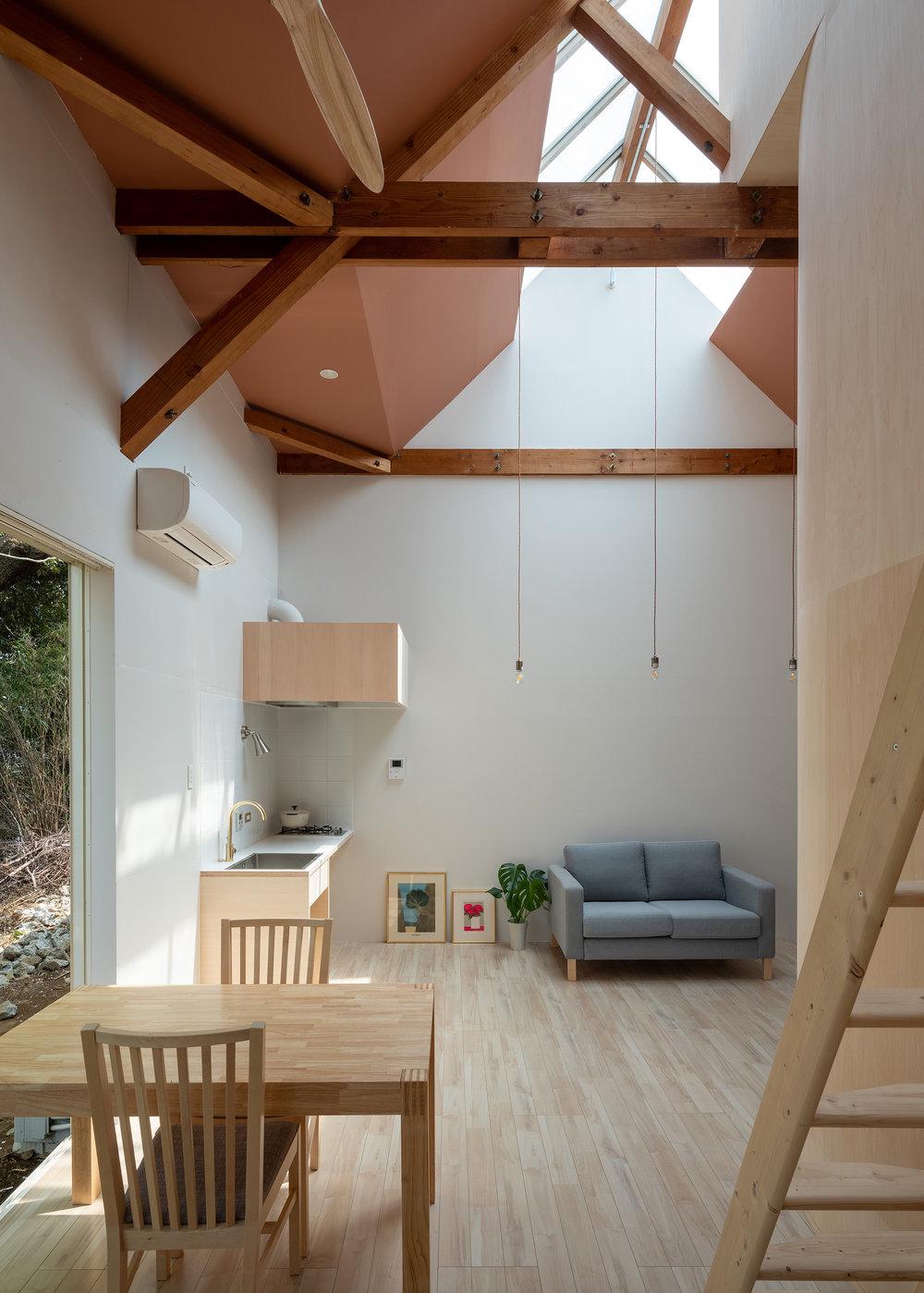


A sloped ceiling also reveals the structure usually hidden by the ceiling. A sloped ceiling can create a stylish space with beams.
This photo shows an example of a roof with a shed roof. The sloped ceiling is emphasized when the beam is visible. The beam also accentuates the interior and gives a tasteful impression.
1-3. Disadvantages of sloped ceiling
On the other hand, there are some disadvantages of a sloped ceiling you need to know before deciding to adopt it. Here are some of the disadvantages of a high sloped ceiling.
Difficult to maintain
A sloped ceiling differs from a normal ceiling in that it is more difficult to maintain the high areas. If high windows or ceiling fans are installed, you need to consider cleaning methods.
The same goes for cleaning over a beam if it is exposed. It is a good idea to use a cleaning tool with a telescoping handle to see if you can reach it.
If the fixture or motorized opening window malfunctions, you will have to hire a contractor to repair it. Keep in mind that when the height is too high to reach with a stepladder, the indoor scaffolding will be required and the cost will be higher.
Sound resonates easily
Another disadvantage of a sloped ceiling is that it reverberates sound well because the space extends vertically. However, solving the sound problem does not require extensive work in construction.
To reduce echoes, add more sound-absorbing materials to the room, such as fabric couches, curtains, and carpets.
Books also have sound-absorbing properties, so those with large collections of books are encouraged to make bookshelves.
Lower heating efficiency
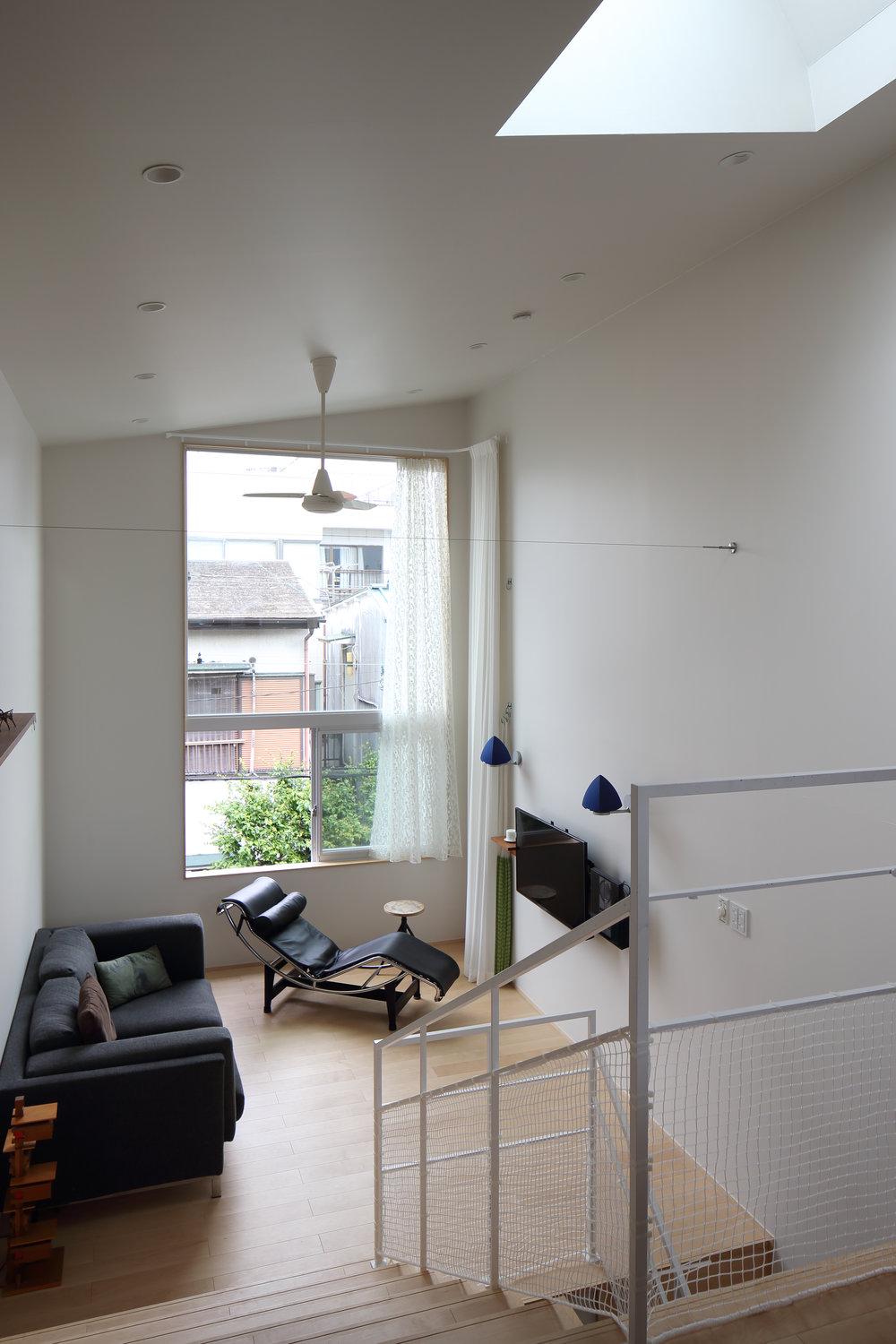


In a sloped ceiling, where the space is larger vertically, heating efficiency is lower because the volume is larger. As mentioned above, this is because warm air flows upwards and cold air flows down to the feet.
The room with a sloped ceiling hardly gets warm even after turning on a heater in winter. To solve this problem, improve the insulation performance of the house itself. The key is right insulation materials and window sashes.
Circulating air with a circulator and employing underfloor heating are also effective measures.
2. What kind of lighting is best for sloped ceiling?
Since the widespread use of LED bulbs, light bulbs are replaced less frequently. Nevertheless, many people may still be concerned about the maintenance of lighting in a sloped ceiling.
How can you light a sloped ceiling beautifully in a functional manner? Here we will show you how to choose lightings for a sloped ceiling.
2-1. How to select lightings
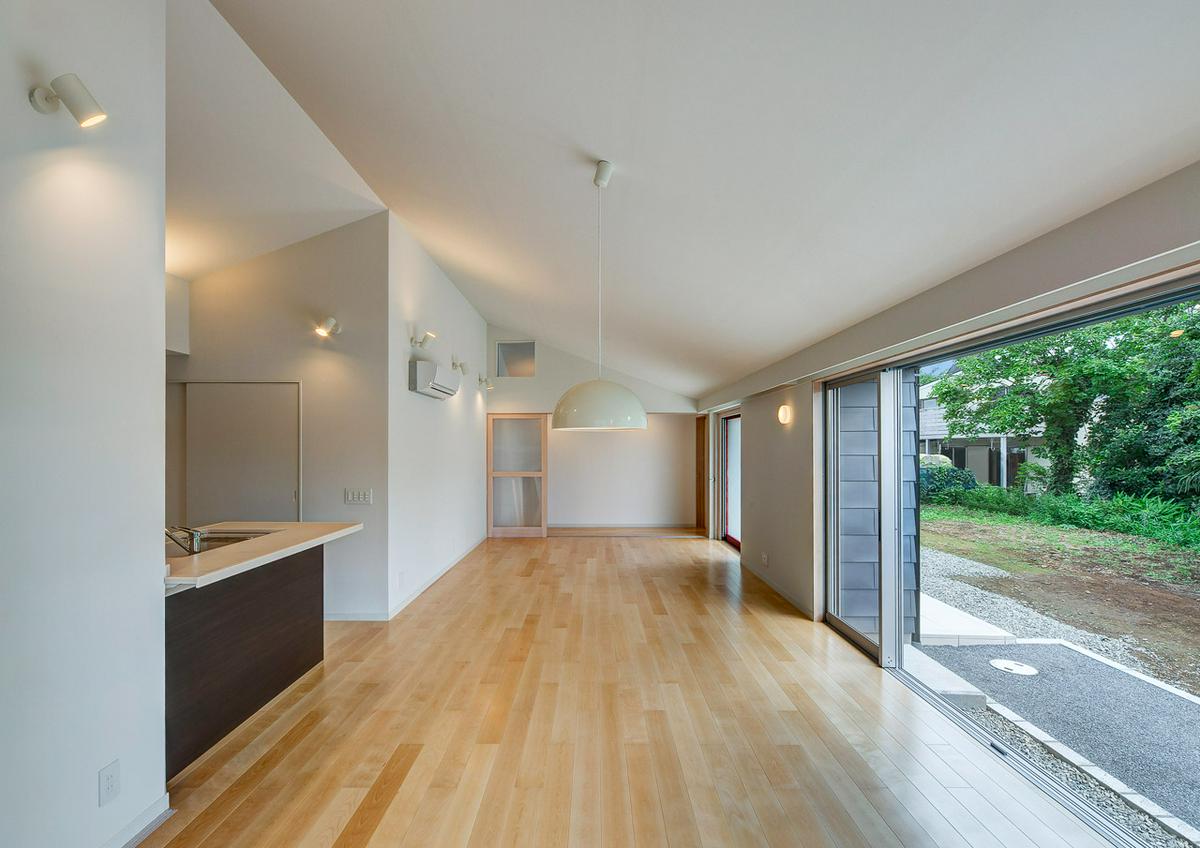


In a sloped ceiling, it is important to place lightings in positions and at heights that are easy to maintain. In many cases, wall-mounted lighting is sufficient without lighting on the ceiling surface.
The photo shows an example of a room with a number of wall-mounted lights and a single ceiling light. Spotlights illuminate the walls, spreading a relaxing indirect light across the room.
Spotlights are convenient because they deliver light to areas where light is needed, and the angle can be adjusted.
2-2. Indirect and other recessed lighting
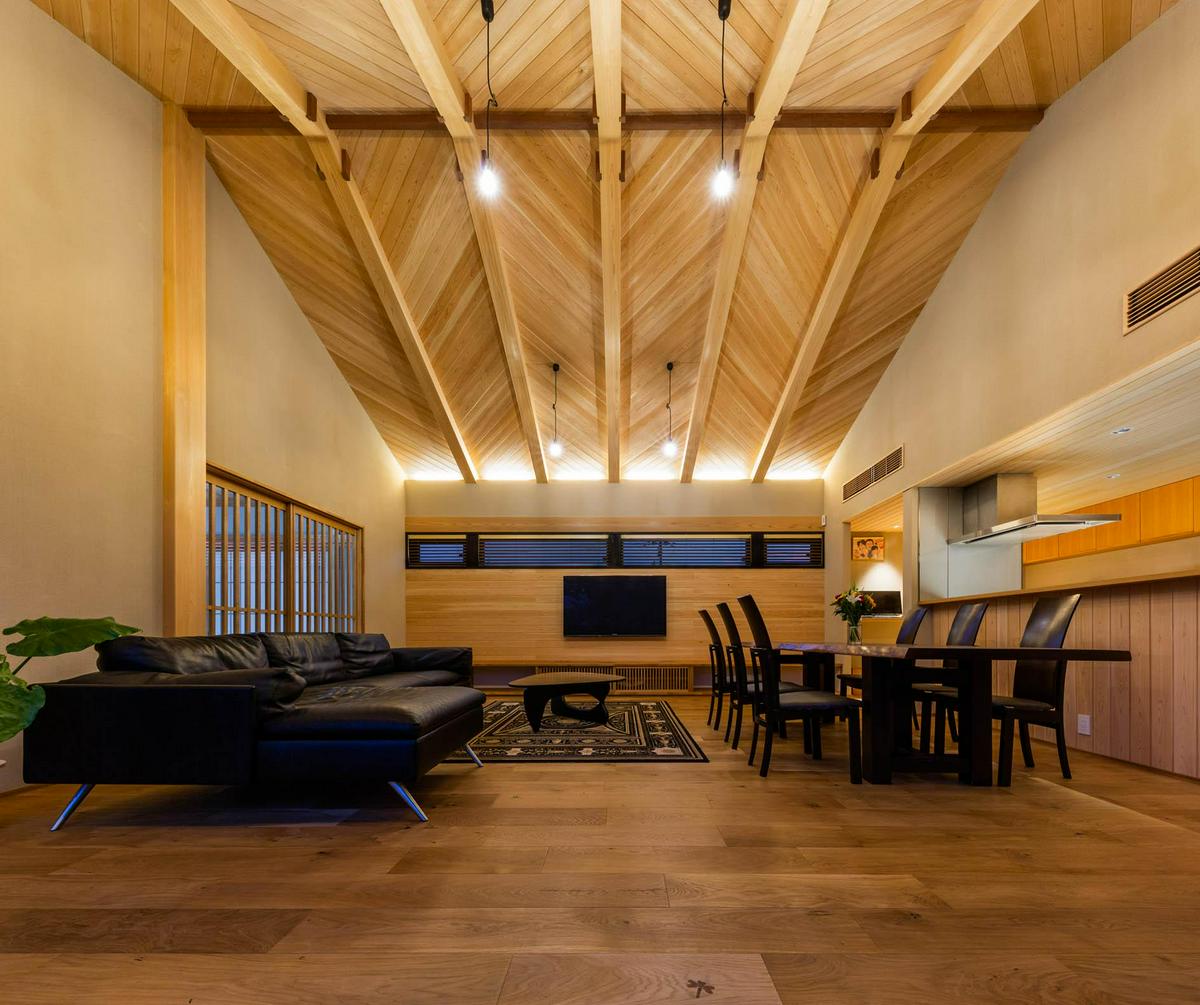


To make a sloped-ceiling living room more luxurious, we recommend indirect or other recessed lightings.
The photo shows an example of recessed lightings between a wall and the ceiling. Indirect lighting enhances the beautiful wood grain and creates a luxurious space.
The direct light such as downlights inevitably generates dark shadows. Indirect lighting, on the other hand, diminishes shadows and creates a calm impression.
Indirect light is reflected from the ceiling and walls and spreads gently to the center of the room.
Can ceiling fan be installed on sloped ceiling?
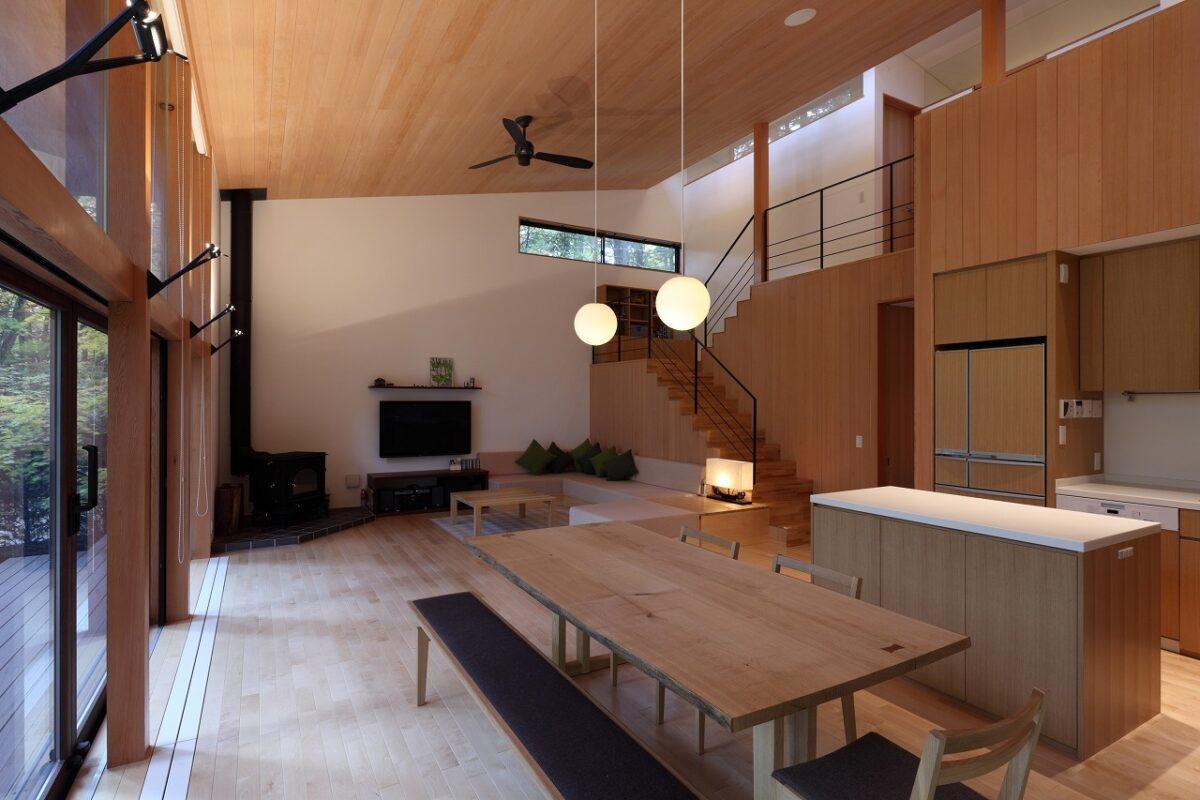


Some people may wonder if it is possible to install a ceiling fan on a sloped ceiling. As it turns out, you can install a ceiling fan can on a sloped ceiling.
However, reinforcement of the base material and selection of fixtures will be necessary, so you need to consult the designer at the planning stage.
Ceiling fans increase heating and cooling efficiency by circulating air. Place downlights far from lightings so that the rotating fan does not block the light.
The stylish-looking ceiling fan creates an atmosphere like a resort hotel.
4. Five beautiful architectural examples of sloped ceilings by architects
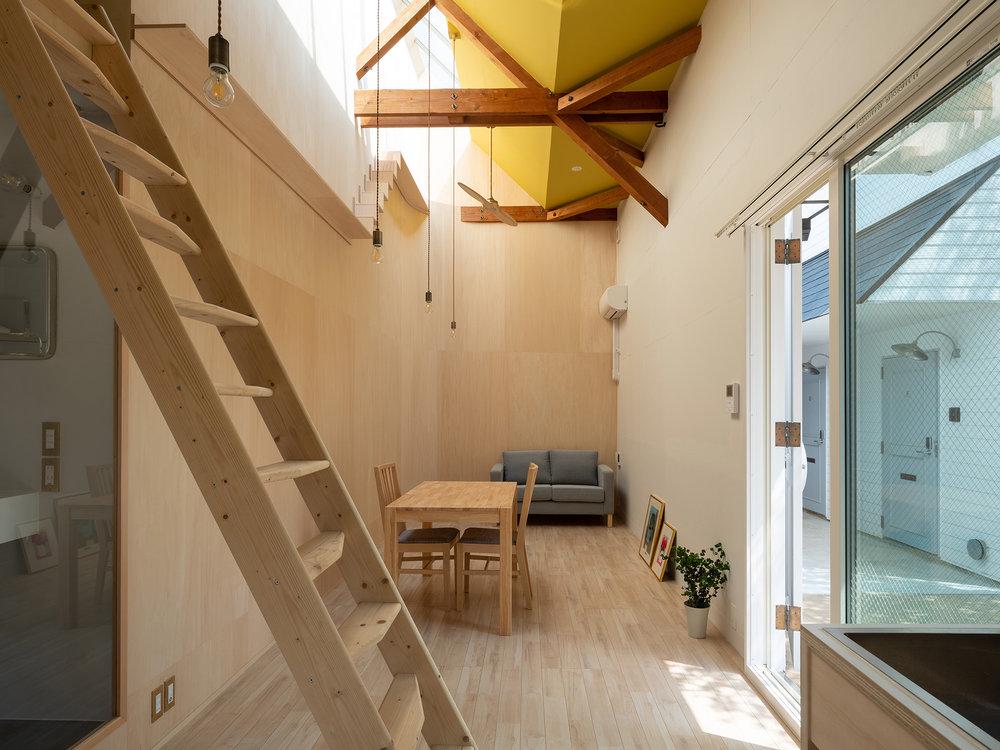


The following are examples of fashionable architecture by architects.
A professional architect takes into account the above characteristics of the sloped ceiling and incorporate them into the design plan while considering the land and the people who will live there.
Please refer to the photos of actual examples to develop an image of your ideal home.
4-1. Case Study 1: Living room with skip floor
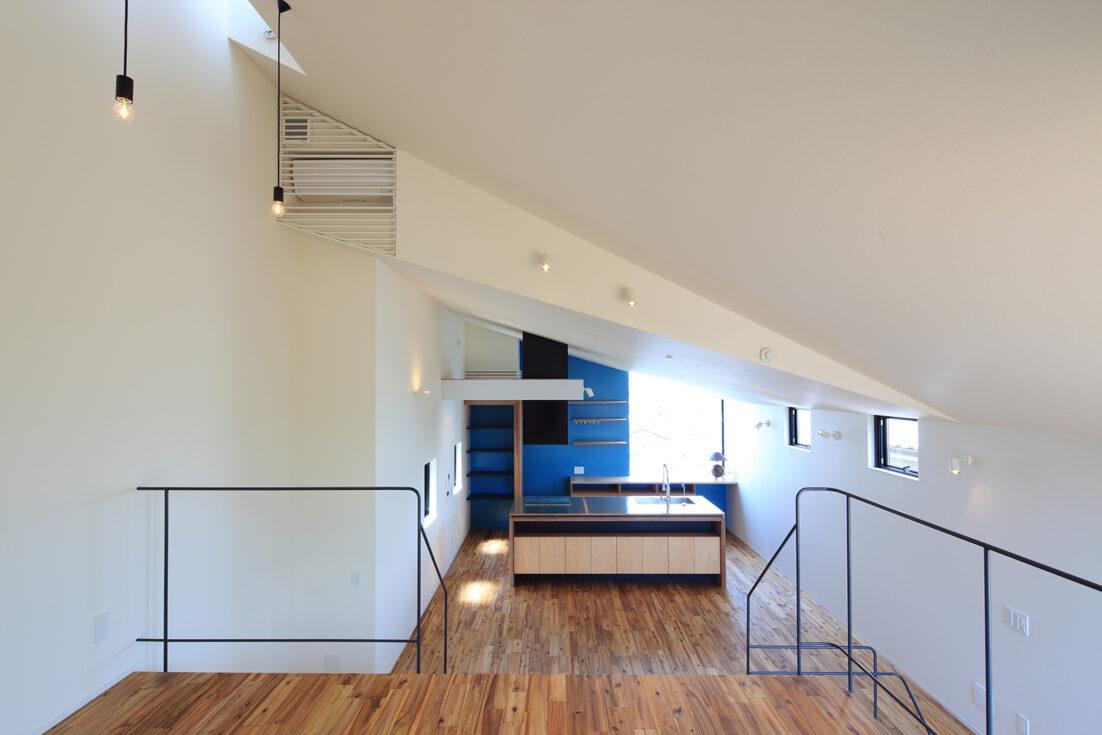


Here is an example of making a skip floor utilizing a sloped ceiling. A skip floor is a section of 2.5 or 1.5 floors, a so-called mezzanine floor.
The sloping angle of the ceiling is changed in the middle of the space, creating a perfectly balanced combination. It is a very special space, as if you are looking down into the dining room from a floating place.
4-2. Case study 2: Sloped ceiling in one-story house
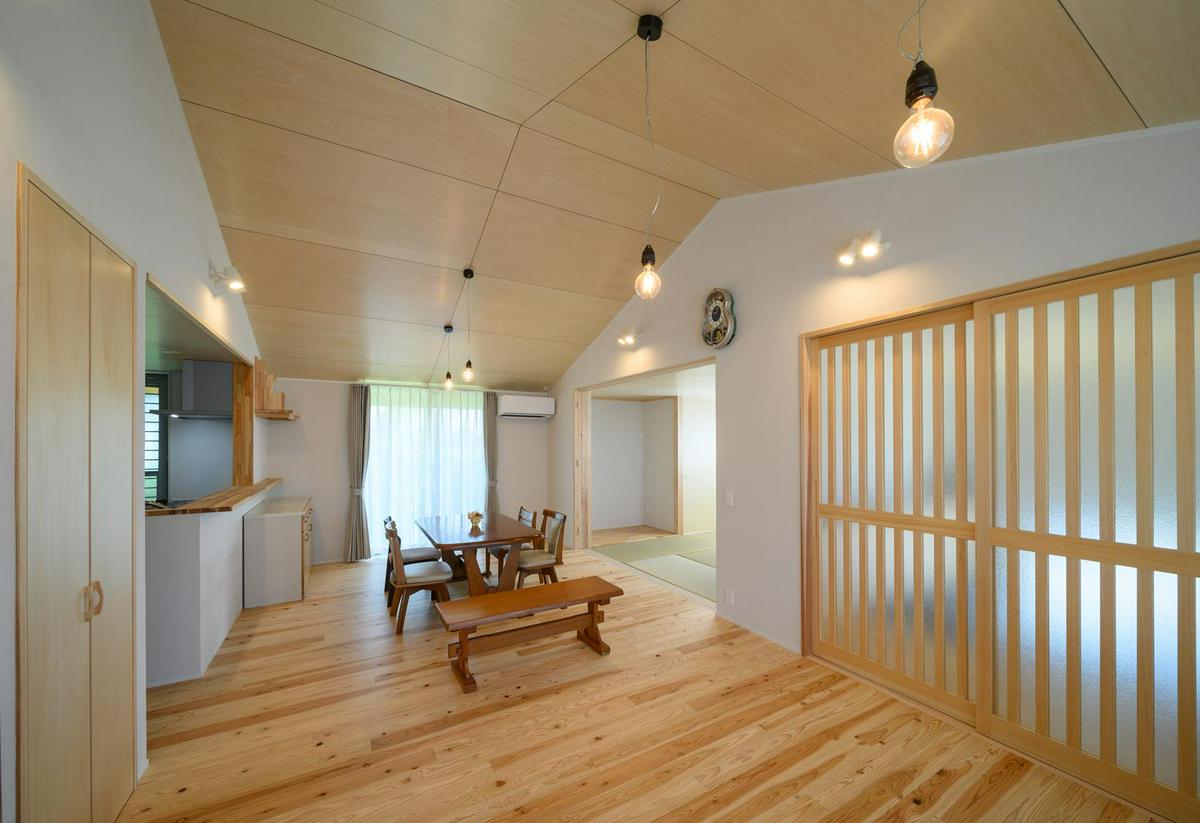


Next, let us show you an example of a one-story house. The sloping ceiling that matches the shape of the roof gives a sense of nostalgia. The gently sloping ceiling creates a spacious yet calm and attractive space.
Pendant lights with bare bulbs are placed in line with the center line of the room to create a clear look.
4-3. Case study 3: Second floor living room with loft



The second floor living room is very compatible with a sloped ceiling. A loft is built at the high part of the sloped ceiling to create a well-defined living space.
The bright sunlight is brought in by the triangular window panes installed to match the slope. The colors of the loft and the exposed beam are matched to create a design point.
A lighting is not on the ceiling surface, but spotlights are placed only in the loft and on the walls. Since they can be reached from the loft, there is no need to worry about maintenance.
An attractive, sloping-ceiling second-floor living room with excellent functionality and design is in place.
4-4. Example 4: Wood grain sloped ceiling
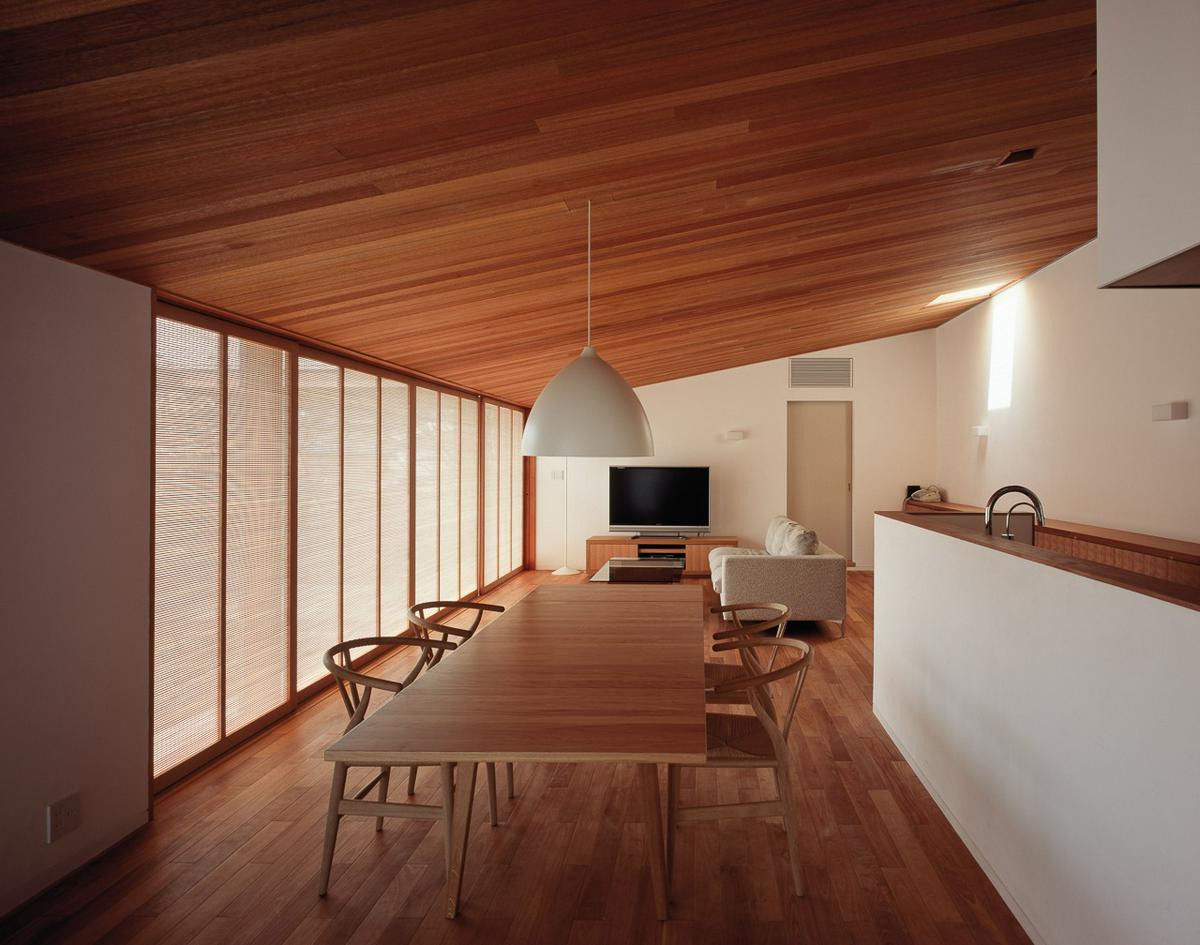


Finally, here is one more example of a one-story house. The photo shows an example of the house where the ceiling slants toward the courtyard.
A higher ceiling is not always better. Some people will find a lower ceiling more relaxing in a living room, where they spend most of their time sitting in a couch.
Skylights on the highest part of the ceiling let in bright natural light. The gently sloped ceiling creates a luxurious space to relax and unwind.
5. Summary
A sloped ceiling has a beautiful three-dimensional feeling. In planning your own new house, you might be particular about the shape of the ceiling to create a higher grade interior.
Even after learning about the advantages and disadvantages of sloped ceilings, you may still wonder whether to adopt it into your own house.
If this is the case, consult our residential construction expert. A professional architect may have ideas to solve any concerns you may have.

